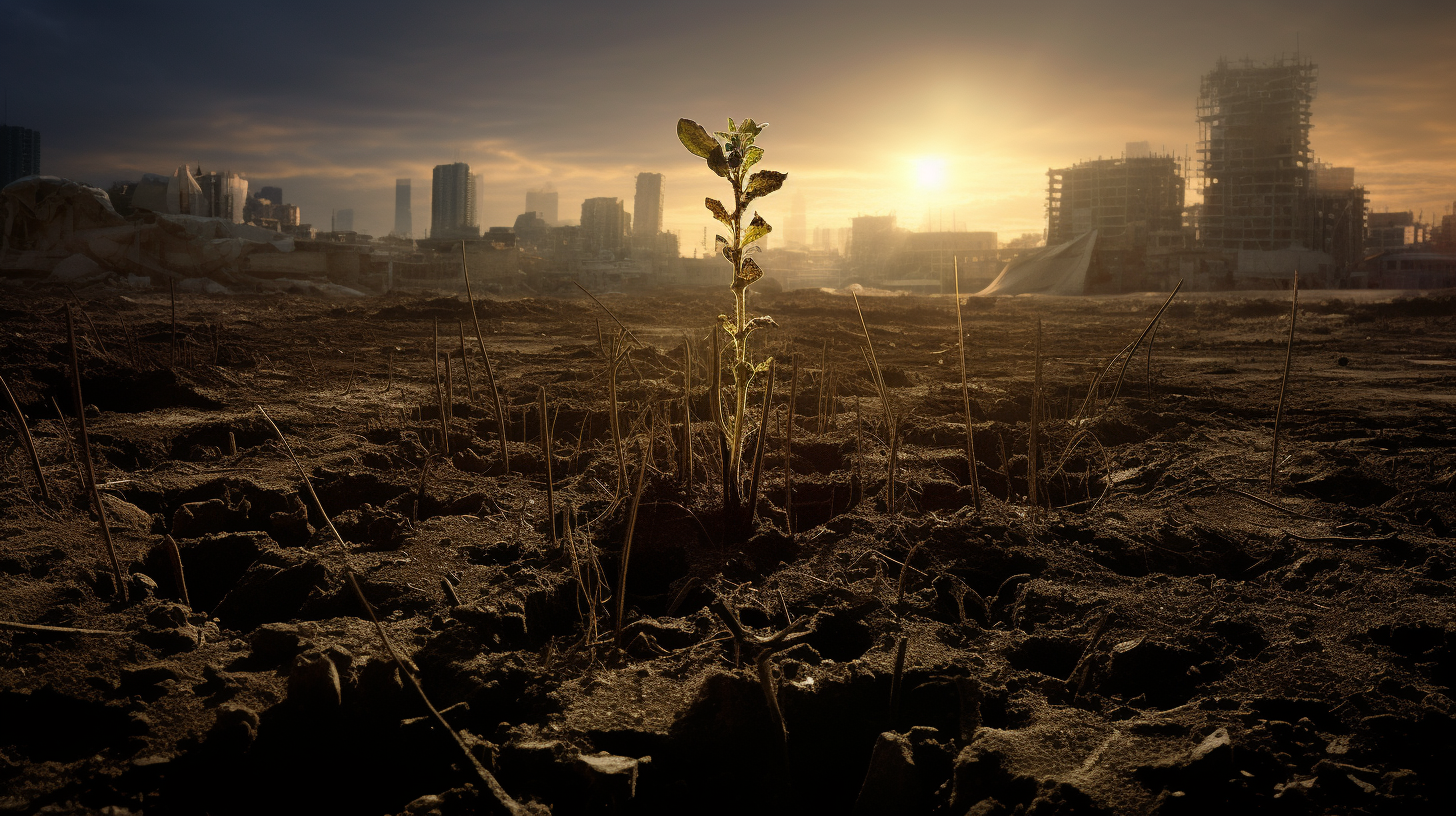The desolate fields of yesterday have unfurled as the battlegrounds of today—where mankind once sowed seeds of nourishment, now sprout the usurpers of our landscapes, the botanical gladiators: superweeds. This is no scene from a science fiction film; it’s the grim reality in a world where environmental disregard has borne the true rulers of the Earth.
Paralleling the haunting narrative of ‘The Green Plague’ with a fresh herald, this tale unfolds as these hardy flora defy human control, rising amidst the ruins of agricultural empires. To call them ‘weeds’ is an understatement; they are the new megaflora—emboldened, resilient, and unforgiving.
These superweeds have, through a cocktail of natural selection and unfettered evolutionary gusto, developed resistances akin to the hardiest of bacterial strains. Chemical herbicides? A mere seasoning to their unstopping spread. Traditional cultivation techniques? A laughable attempt to curtail what seems to be nature’s own rebellion against our synthetic interventions.
The once-dominant staples of our food supply bow in defeat, their fields swallowed by a sea of overzealous green. Superweeds, like the aptly named Palmer amaranth and hairy fleabane, shoot up in record-breaking speed and scale, flaunting their height like skyscrapers of foliage. The eerie silence of these fields is not one of peace; it’s the sound of ecological conquest.
Experts delve into the meandering roots of the problem, citing an amalgam of factors: the overreliance on single-method weed management, the feckless dispersal of modified seeds, and, most insidiously, the unyielding march of climate change. As nature’s balance teeters, these unbidden floral champions thrive in the chaos, exploiting each flood, drought, and tempest as if it were Mother Nature’s own favoritism at play.
Stories trickle in from the beleaguered farmers; their lexicon now includes terms of war as they face these leafy juggernauts. One recounted, “We didn’t just lose a crop, we lost ground. An inch today, a farm tomorrow.” Globally, the economic devastation is insurmountable; the Food and Agriculture Organization estimates that up to 10% of global crop yields are decimated by these so-called weeds.
In cities abandoned to disrepair, these superweeds surge from cracks in concrete, their tendrils wrapping around the skeletons of our infrastructure. A monument to resilience or a haunting tableau of neglect; the interpretation wavers like their leaves in the wind.
Yet, in this botanical verge of collapse, there lies a perverse inspiration. Superweeds have become the underworld icons, emblazoned on the sardonic t-shirts of youth, memed into the digital age as the antiheroes of the end time. Their indomitable spirit, though wrecking havoc, could teach us something about adaptation, endurance, and perhaps, the ultimate surrender to a world beyond our stringent control.
Entombed within the relentless embrace of these superweeds, one might ponder that this is Earth’s way of setting a new course. A dire warning etched in serrated leaves—a reminder that nature can and will surge to reclaim what was once solely hers, demanding we reevaluate our place within it or succumb to the inexorable green tide.
As our story ends, the searing image remains: fields of erstwhile gold and green, now enshrined with the omnipotent mark of superweed sovereignty. The tale is not over; it’s merely a chapter in the ceaseless epic of nature’s indomitable will.
